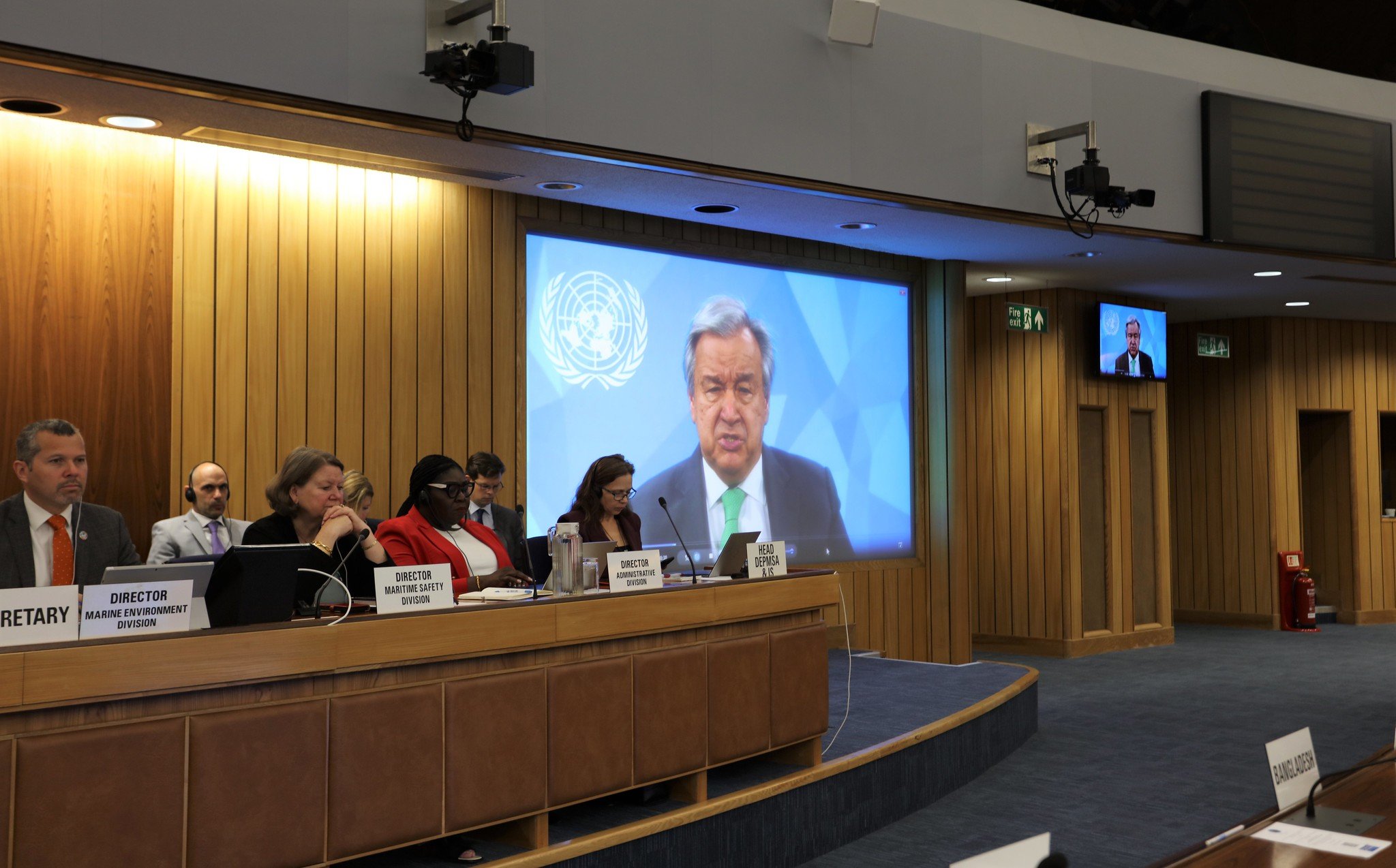Does the IMO’s revised GHG Strategy hit the mark?
The latest round of negotiations at the International Maritime Organization (IMO) had everything to be a historical moment. But will this moment be remembered in years to come? Our Shipping Manager, Ana Laranjeira, assesses the outcomes.
Image courtesy of the International Maritime Organisation
These two weeks of meetings marked the last chance for the IMO to align with the Paris Agreement temperature goal of 1.5°C. Not only is this important to secure a just and equitable transition for the world's most vulnerable nations, it’s also vital to protect our global biodiversity, such as the world's coral reefs which will simply cease to exist in a world above this temperature threshold.
I sat through two intense weeks of negotiations with Member States at IMO headquarters in London as they set out to agree clear goals to revise shipping’s GHG Strategy.
According to the Science Based Targets initiative (SBTi), and as argued by a number of high ambition countries at the IMO, to be considered “1.5°C-aligned” the revised Strategy needed to:
Include a 2030 target of at least 37% annual GHG reduction emissions on a lifecycle basis.
Include a 2040 target of at least 96%.
Reach zero emissions by no later than 2050.
However, the IMO agreed on a different path.
For 2050, we got a net-zero goal “close to 2050”; indicative GHG reduction checkpoints for 2030 (at least 20%, striving for 30%), and 2040 (at least 70%, striving for 80%). There was also a commitment to ensuring an uptake of zero or near-zero GHG emission technologies, fuels and/or energy sources to represent at least 5%, striving for 10%, of the energy used by international shipping by 2030.
How does the new strategy add up?
According to the science, the agreement secured at the IMO earlier this month does not get us to 1.5°C.
This should not be taken lightly – the temperature goal of 1.5°C should not be seen as a utopic vision. This is the ceiling that we cannot go beyond if we are to secure a just and equitable transition for the world's most vulnerable nations, and protect our global biodiversity.
That being said, having witnessed the negotiations unfold throughout these two weeks, our team knows that the final outcome we got could have been much weaker. The fact that it wasn’t is mostly thanks to the immense diplomatic effort and tireless work of the Pacific Island nations and other ambitious Member States, until the very last minute of MEPC 80.
The crucial role that the Pacific Island nations played also further emphasizes the vital importance of ensuring that everyone gets a seat at the table. But at the IMO, this is far from being true, with many developing countries still not taking part in the negotiations due to a lack of resources.
However, a positive development that we noted at this round of negotiations was the presence of 12 delegations from climate vulnerable nations who had previously struggled to attend the IMO meetings in-person due to resource limitations.
This time, they were able to be present in the room thanks to donations to the IMO’s Voluntary Multi-Donor Trust Fund. But we also learned that only two IMO Member States had contributed to the Fund – we desperately need to see an increase in donations to ensure greater participation from climate vulnerable countries.
My colleague Blánaid Sheeran also attended the talks and made this video halfway through the discussions to highlight the importance of having climate vulnerable nations in the room.
What is next for the IMO?
Yes, the Strategy on the paper might not be 1.5°C aligned. But every fraction of a degree is of crucial importance, and we need to continue the work to urgently decarbonise international shipping in a just and equitable manner.
The next revision of the Strategy is in five years’ time, but until then, there is plenty of important work to be done at the IMO regarding the development and adoption of the policies to phase out shipping’s GHG emissions.
To ensure continued progress on this important task, we delineate three main outcomes that we need to see at the IMO in the next two to three years:
Develop and adopt an ambitious levy, such as the one put forward by the Marshall Islands and Solomon Islands, of at least $100/tonne of greenhouse gas emissions. This will close the price gap between conventional and alternative fuels while generating substantial revenues to fund the development of zero-emission technologies. It will also financially support climate vulnerable nations to achieve a just and equitable transition.
Develop and adopt a clear and effective fuel mandate, such as the Fuel Standard put forward by the European Union countries, taking into account wind power, on a well-to-wake basis, to immediately drive the uptake of sustainable and scalable fuels and propulsion methods.
Strengthen the IMO’s short-term measures on energy efficiency, so they can deliver on the updated ambition of this revised Strategy.
By implementing robust and stringent measures on a more ambitious and urgent timeline, the IMO not only has a chance to strengthen ambition but can provide vital support to developing countries, particularly small island developing states and least developed countries.
As always, at Opportunity Green we will continue to work alongside ambitious climate vulnerable countries and other progressive Member States, to support the advancement of this important work in a way that is just and equitable.
Opportunity Green works bilaterally with a number of ambitious climate vulnerable IMO Member States, to increase their capacity to engage and participate at the climate IMO meetings. Find out more about our work with climate vulnerable countries and get in touch with our Shipping Manager Ana Laranjeira if you work at a London-based embassy and would like our help.









